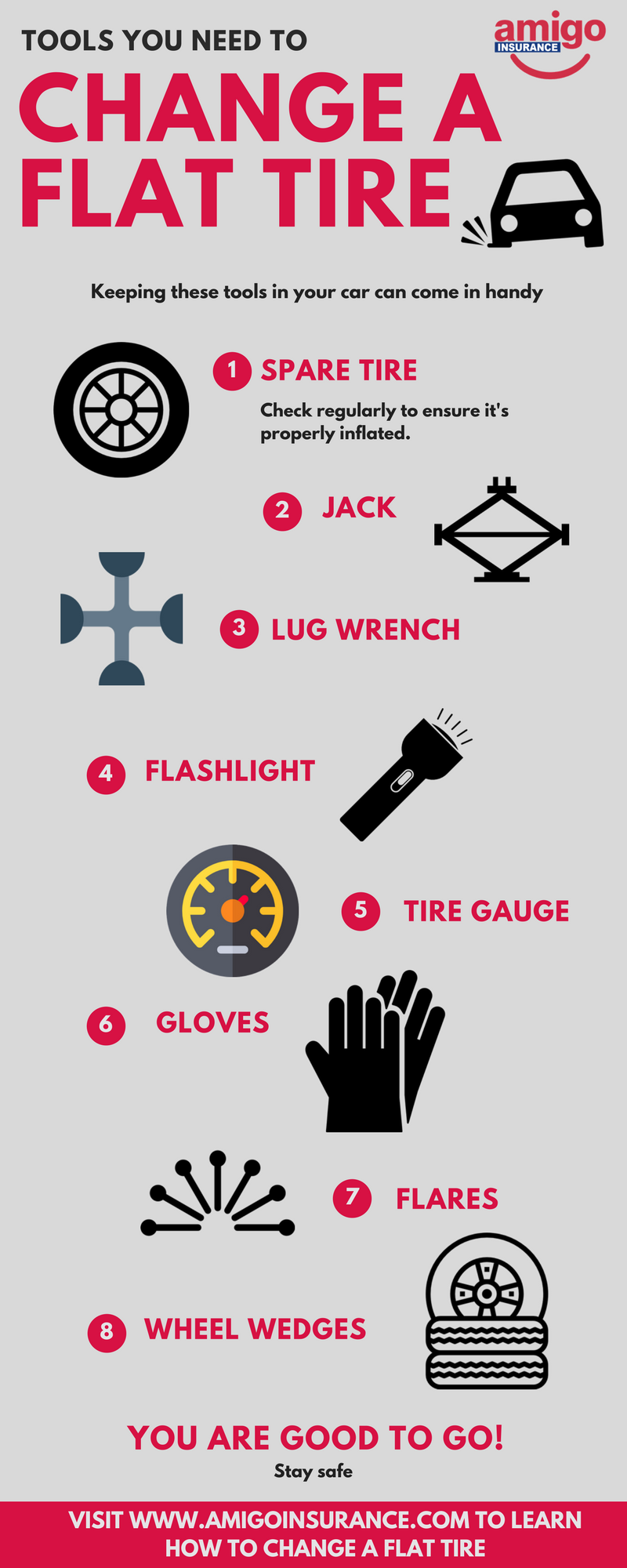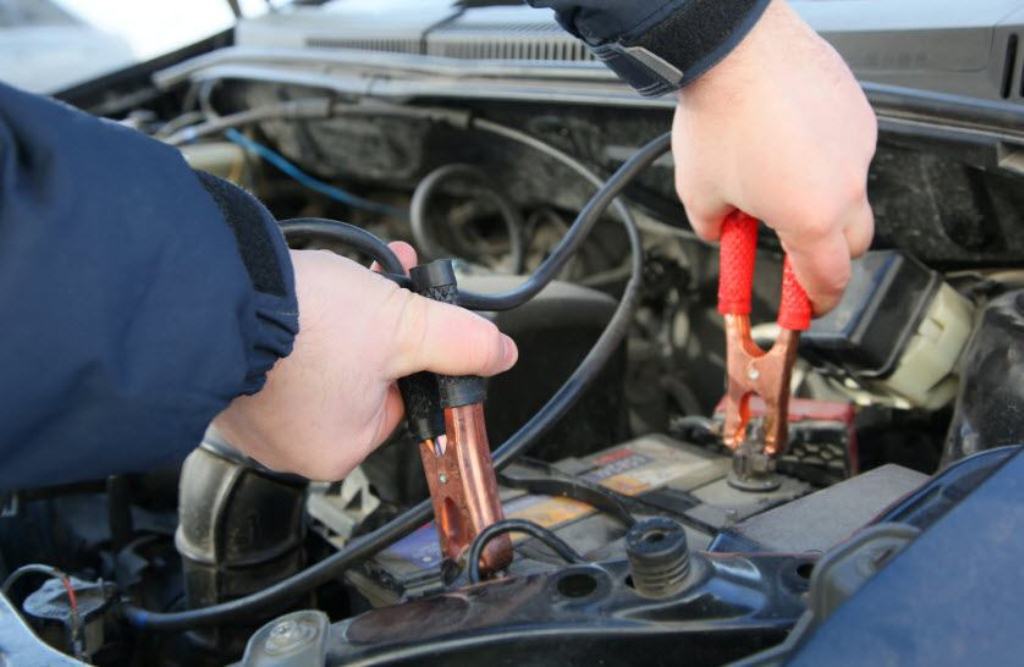You’re driving to an important meeting or doctors appointment when you hear that awful flapping noise coming from your back tire. Looks like you’ve got a flat.
Getting a flat tire is something that’s bound to happen to almost every driver. In fact, according to statistics, every driver will experience an average of 5 flat tires in their lifetime. What’s worse is that it always seems to happen at the worst possible moment.
Fortunately, you don’t have to go it alone. Changing a tire is a simple process that can be done in 15-30 minutes depending on experience. All you need is a couple of tools that you might already have in your car. If you don’t, they can be found at your local auto parts supplier at inexpensive prices.
So, before you pick up the phone and call a tow truck, see if you can change the tire yourself.
Tools You’ll Need
- Spare Tire (TIP – check your spare regularly and ensure it’s properly inflated)
- Jack
- Lug Wrench
- Flashlight
- Tire Gauge
- Gloves
- Flares or Reflective Triangles
- Wheel Wedges
- Owner’s Manual

- Step One: Find a safe spot to pull into. If a tire blows out whilst on the road, turn your hazard lights on and pull into a safe space. If you’re on a busy street or highway, try to pull away from traffic as far away as possible. Suitable areas include parking lots, the shoulder of an off-ramp or a straight, flat, side street. Try to avoid any areas at an incline.
- Step Two: Once in a safe area, make sure your parking brake is engaged and get your tools and spare ready to use.
- Step Three: If on hand, use flares or reflective triangles on the back of your vehicle. These are particularly handy if you get a flat tire in the late afternoon or night. They will let other drivers know that a vehicle has stopped.
- Step Four: Use the wheel wedges and place them against the tires on the opposite side of the flat. This will help make sure that the vehicle is secure while you use the jack.
- Step Five: Remove the hubcap. If the lug nuts are exposed, you don’t have to do this step. Using the flat end of the lug wrench, remove the wheel cover.
- Step Six: Loosen the lug nuts with the lug wrench. Do Not Remove.
- Step Seven: Move jack under your car.
- Step Eight: Carefully expand the jack until the flat tire is about 5-6 inches off ground. Remember not to place any part of your body under the vehicle. A fault in the jack could result in serious injury if not careful.
- Step Nine: Unscrew and remove lug nuts. Be careful not to lose them as you’ll need them once the spare is on.
- Step Ten: Remove the flat tire from the hub by placing two hands firmly on the tire and pulling towards you.
- Step Eleven: Align your spare tire with the exposed lug bolts and push them into place.
- Step Twelve: Replace the lug nuts with your hands. Don’t use the wrench until after your vehicle has been lowered.
- Step Thirteen: Lower the jack until the spare tire touches the ground safely. Once on the ground, remove the jack.
- Step Fourteen: Using the lug wrench, tighten the lug nuts. Make sure they are tightly secured.
- Step Fifteen: Replace the hubcap or wheel cover.
- Step Sixteen: Remove wheel wedges from the tires you previously placed them on.
- Step Seventeen: If you have a tire gauge, check the spare tire’s pressure. If it does not match your vehicle’s PSI, drive to your nearest gas station and fill accordingly.
Keep in mind that it’s not advised to go long periods of time on a spare tire. It’s recommended you take your flat tire to a repair shop and get it replaced or repaired.
While changing your own tire can certainly save you a couple of bucks, safety should always be your number one priority. Consider the weather, location or tool condition when deciding if you should do it yourself or call for help.
Signed,
Amigo Insurance










